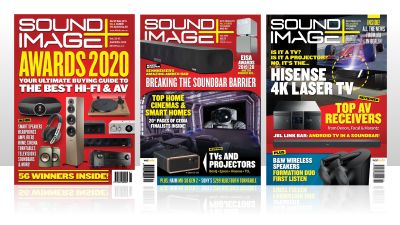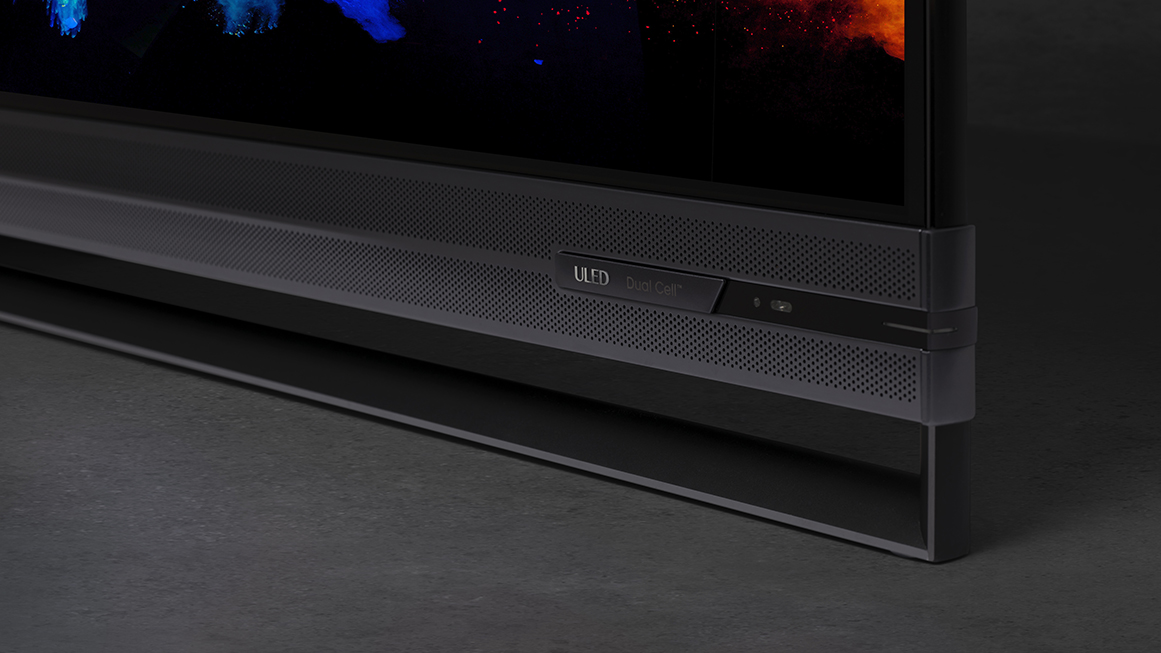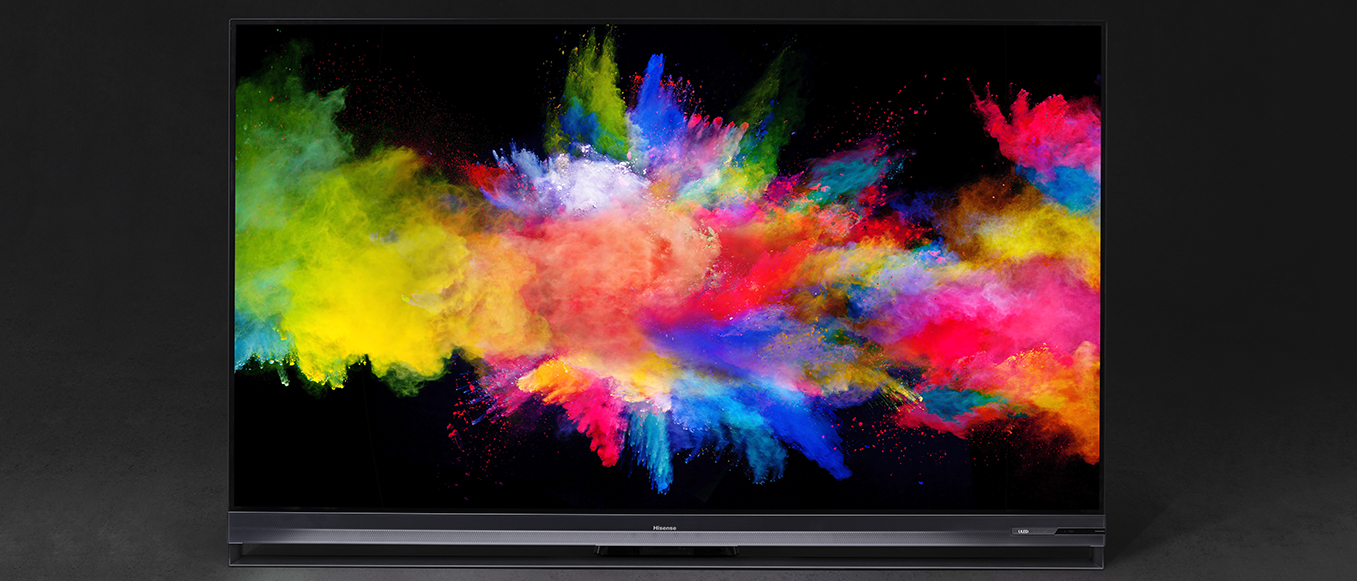Sound+Image Verdict
For years manufacturers have been trying to make an LCD TV which delivers the contrast ratio available from OLED. Hisense hasn't technically reached these heights with the 65SX Dual Cell UltraHD TV, but it sure does come close enough for our liking.
Pros
- +
Excellent black levels
- +
Very good built in sound
- +
Good network performance
Cons
- -
Password reset too short
- -
Some video processing bugs
Why you can trust What Hi-Fi?

This review originally appeared in Sound+Image magazine, one of What Hi-Fi?’s Australian sister publications. Click here for more information on Sound+Image, including digital editions and details on how you can subscribe.
While we’ve been promoting the merits of OLED since the very first OLED TVs arrived, LCD technology has evolved more dramatically than OLED in the years since, closing the performance gap. Does Hisense’s Dual Cell technology, which aims to deliver OLED-level blacks, now level the playing field?
Equipment
How does Hisense attempt to do this? The Dual Cell technology used in this 65SX incorporates a remarkable two million individual dimming zones of control for the backlight. The panel itself has the 8.3 megapixels expected of Ultra-HD resolution. The backlight has close to 2.1 megapixels of control.
Note we say that it has 2.1 mexapixels of ‘control’, while the backlight itself has rather less – fewer than 100 zones, we’re told. The trick is the placement of a Full-HD LCD panel between the backlight and the display panel. This extra panel provides that highly granular control over the light allowed through to the main panel. Each one of its pixels controls the light for just four pixels on the main panel.
Hisense had to develop a way of perfectly aligning the two panels. This is one of those ideas that seems obvious in retrospect, but is actually quite difficult to implement. (They tell us it’s a hard thing to do, and we have to believe them because, after all, no one else is yet doing it.)
So did Hisense just take a regular Full-HD panel and stick it on the back of the UHD panel? In a normal TV panel, each pixel consists of three sub-pixels for the three colours: red, green and blue. But the rear panel does not use colour filters. All pixels are simply somewhere between full black and full white. Hisense tells us that the back panel was especially developed for this TV to do the job.
Hisense doesn’t give an official contrast figure for this TV. But we can get a sense of what it might be by understanding that the ‘native’ contrast ratio available from modern LCD panels is typically somewhere around 1000-to-1, maybe a little higher. Higher subjective levels are achieved by electronic trickery, such as backlight management. That’s why you might see ‘dynamic’ contrast ratios claimed by some TVs of 100,000-to-1. And this TV does use some of that too. But if you have two panels, one in front of the other, each rated at 1000-to-1, then their combined ability to stop light is not additive, but multiplicative. So the overall contrast ratio would be of the order of a million to one.

In addition to the new technology, the 65SX is premium in every way. It’s one of the heaviest LCD TVs we’ve ever used, weighing 61kg in total, though in part that’s due to the included subwoofer, a vaguely pyramid-shaped unit that sits behind the TV and doubles as a counterweight. We weighed that alone at a hair over 22kg. This connects wirelessly for the signal, and by wire to the TV for power. But a separate power supply is included so you can wall-mount the TV and keep the subwoofer separate (pictured left). The panel itself is still a hefty 38.5kg.
The latest hi-fi, home cinema and tech news, reviews, buying advice and deals, direct to your inbox.
The rest of the audio system is lined up at the bottom of the TV, firing forwards – there are four tweeters and two midrange drivers, with Dolby Atmos processing included.
The TV runs the latest version of Hisense’s VIDAA smart interface. It features a strong line-up of streaming services – there are dedicated keys on the remote for Netflix, YouTube, Prime, Stan and ABC iView, with others available via menu.
There’s an Ethernet connection – 100Mbps we think – and dual-band Wi-Fi. The HDMI inputs are rated at up to 4K at 60Hz. And we should note that Hisense provides this TV with an impressive three-year warranty.
Setup
We placed – with some difficulty! – the TV on our regular bench. This was probably a little higher than would be ideal for this TV because the screen tilts back by a few degrees. We’d suggest a low bench.
The TV guides you through set-up. To use the smart stuff, you have to create and sign into a VIDAA account. We tried creating one, but the TV told us that our email address already had one. Fortunately the TV has a ‘Forgot password’ function, in which you enter your email address to receive a verification code.
Unfortunately, the function requires you to enter the verification code within two minutes. The emails repeatedly didn’t arrive until a minute or two after that. The way around this is to go to the VIDAA home page directly, on your computer. The email then comes through in time! That done, we could log into the TV normally.
Performance
So, how good was the Dual Cell technology? Short answer, brilliant. First let’s talk about ultimate black levels. No, they weren’t quite
as deep as OLED, but were surprisingly close. In a dark room we could, by peering very carefully, barely make out a very slight difference between the full black parts of
the image and the black behind the TV. But only just, and only with effort. In use, we’d say that the subjective difference between this TV and OLED was zero.
Did the fact that there are ‘only’ two million individual dimming zones, compared to eight million on a UHD OLED TV, make any difference? Not in the slightest as far as we could tell. Our larger full-white-on-black test patterns had edges as smooth and precise as OLED, even when we were up close to the TV. We also used a test pattern – again full white on full black – of tiny dots having just one, two, three or four pixels in size. All of them were properly delivered, and there was simply no blooming of light around any of them. We think that perhaps the single pixel dots weren’t quite as bright: we’re guessing that the zone backlight was not running at full power for those dots.

The one thing that gave away the fact that full black elements of the picture were just very slightly short of OLED levels was the dynamic light control implemented by the TV. If we were watching some 2.35:1 content, the black bars at the top and bottom of the screen would be stunningly black. And then if the scene faded to full black, the TV’s dynamic brightness control would turn down the backlight and the bars would get even blacker, showing that they had not been quite as black as they’d seemed.
Colours were strong, benefiting in the same way that OLED colours do from the deep black foundation on which they appear. The panel supports 12 bits of colour depth. And it supports not just regular HDR10 but also Dolby Vision. Hisense says that the TV can deliver a sustained 1000 nits output. We were impressed by the brightness, and of course that enhanced the perceived contrast even more.
The 50Hz deinterlacing was a mixed bag. We used our usual test clips – all progressive content recorded as deinterlaced. If correctly detected by – in this case – the TV, the paired fields will simply be woven together to reconstruct the picture. That worked really rather well with this TV when we sent it 576i/50 content – so that’s most Australian DVDs and free-to-air SD material.
One of our clips has a progressive video movie showing, with an interlaced text field scrolling across the bottom. With this scene the TV went into the appropriate mode of deinterlacing stuff which is recorded in video format. Which is to say, it ‘bobbed’ the signal. That is, instead of weaving the two frames together – which would have left the scrolling text with a nasty level of combing – it applied motion-adaptive deinterlacing. That results, of course, in some distortion of the main video. But the instant that the scrolling text stopped, the TV flipped over into the more appropriate weaving strategy. You couldn’t ask for more. Even through our most challenging 576i/50 clip, the TV held its stance and appropriately decoded the picture for maximum quality.
But this quality kind of disappeared with 1080i/50 content. Happily this stuff appears on only a small number of Australian Blu-ray discs – Miss Potter and Pulp Fiction are two examples. But it is also the format used by 1080-resolution Australian free-to-air HDTV. Using Miss Potter, supplied by our Blu-ray player in native format, one of our go-to scenes was simply weird. The camera pans down over a scene of trees with a house at the bottom. As the pan slows, closing on the house, a lot of deinterlacing software gets confused and treats the scene as video rather than progressive film, and the details on the house visibly wobble under this processing. That was clearly the case with this TV, perhaps a little more than usual. What was not usual was that the TV seemed to want to make sense of the grain in the picture and turn it into actual content rather than mere random noise. This manifested as a kind of screen that overlaid the panning image. It was as though we were watching the scene through a fuzzy out-of-focus flyscreen. Oddly, this was apparent only in the three or four seconds of this scene and at no other point. (If Hisense wants to check, it’s just as Chapter 10 of the Australian Miss Potter Blu-ray starts.)
Solution: we set our Blu-ray player to 1080p output and that whole weird effect disappeared. We mention all this not so much as a purchase consideration, but to advise that it’s a good idea if you’re using this TV to set your players to progressive output.
The motion smoothing on this TV was good, but totally confusing. By default it was set to ‘Standard’ mode. This provided excellent smoothing on our test scenes, making the Chicago flyover in The Fugitive silky smooth. There was a tiny amount of heat-haze distortion which, we confess, we largely ignored in our viewing because it really was quite minimal. But as we drew closer to deadline, we decided to do our duty and check out the other options. Which is where things got weird. When we switched motion smoothing off, the picture turned into the strangest thing we’ve experienced in years. There was a double picture, one frame overlaid over another, from slightly different times. We tried the ‘Film’ mode – ideal, we would have thought, for 1080p/24 pictures, but this one seemed to drop to 12 or perhaps even 8 frames per second, turning all motion super-choppy.
We’re confident that Hisense will address these clear oversights with a future firmware update. In the meantime, it was still possible to turn off motion smoothing, should you prefer that. Just choose the Custom setting and turn both Judder and Deblur down to zero.
All the networking facilities worked smoothly and well. We watched a fair bit of Netflix on the TV. Its sound quality was definitely a step up on what you usually get from TVs. But mostly we used its ARC capabilities to send sound to our home theatre receiver. CEC was not switched on by default, so we had to find the setting and put it on before we could do this.
The VIDAA home page was laid out in a similar fashion to those of recent Android TVs. The interface was effective. We also plugged in a USB keyboard for doing things like entering passwords.
Verdict
Technically, the black levels achieved by the Hisense Dual Cell TV don’t quite match those of OLED. But by golly, they come very close. The Hisense 65SX UltraHD Dual Cell TV is one impressive unit.
Sound+Image is Australia's no.1 mag for audio & AV – sister magazine to Australian Hi-Fi and to the UK's What Hi-Fi?, and bestower of the annual Sound+Image Awards, which since 1989 have recognised the year's best hi-fi and home cinema products and installations. While Sound+Image lives here online as part of our group, our true nature is best revealed in the print magazines and digital issues, which curate unique collections of content each issue under the Editorship of Jez Ford, in a celebration of the joys that real hi-fi and high-quality AV can bring. Enjoy essential reviews of the most exciting new gear, features on Australia's best home cinemas, advice on how to find your sound, and our full Buying Guide based on all our current and past award-winners, all wrapped up with the latest news and editorial ponderings. Click here for more information about Sound+Image, including links to buy individual digital editions and details on how best to subscribe.


